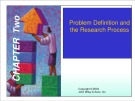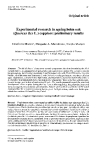
RESEARCH ON THE EFFECT OF DEPTH OF CUT ON SURFACE
ROUGHNESS AND POWER WHEN MILLING PLANE SURFACES
ON MAKINO KJ MILLING MACHINE
Nguyen Van Sang
1*
, Tran Duy Nam
1
1
Dong Nai Technology University
*Corresponding author: Nguyen Van Sang, sangnv@dntu.edu.vn
GENERAL INFORMATION ABSTRACT
Received date: 27/03/2024 Milling machines are often used in companies, vocational
training centers and universities in Vietnam, especially Makino
KJ milling machines. Through experimental research, the
regression model of roughness has been built as a trigonometric
function of cutting parameters, which is also the reason why this
article needs to be studied. Therefore, the core point of this article
will be to study and choose the most reasonable cutting depth to
reduce power consumption during the machining of the end face
and meet the requirements for roughness when machining flat
milling products on Makino KJ milling machines.
Revised date: 29/05/2024
Accepted date: 23/07/2024
KEYWORD
Cutting depth;
Roughness;
Power;
Makino KJ milling machine.
1. INTRODUCTION
The article uses the object, scope and
research equipment of Makino KJ milling
machine, the milling cutter is a face milling
cutter, the turning material is the steel used to
manufacture the machine after the C45 casting
process, using the plane milling method, the
main parameters to study are the cutting depth
(t) affecting the roughness and power
consumption. The research method is based on
the theory of cutting machining on machine
tools. The experimental research method in
machine manufacturing to determine the
objective function, on that basis, the correlation
between the objective function and the
influencing parameters is established. Using the
optimization problem solving method to find
the reasonable usage mode of Makino KJ
milling machine.and conduct studies on the
changes of parameters during the cutting
process when machining flat surfaces in many
different experiments, from which we use the
single-factor evaluation method to be able to
give the optimal mode when choosing the
parameters of the cutting depth affecting the
power and quality of the product surface
roughness when machining flat surfaces on the
Makino KJ milling machine. (Lan et al., 2021).
2. METHODOLOGY
2.1. Selection of parameters affecting the
objective function
Factors related to the workpiece: Use C45
steel.
01-2025
35















